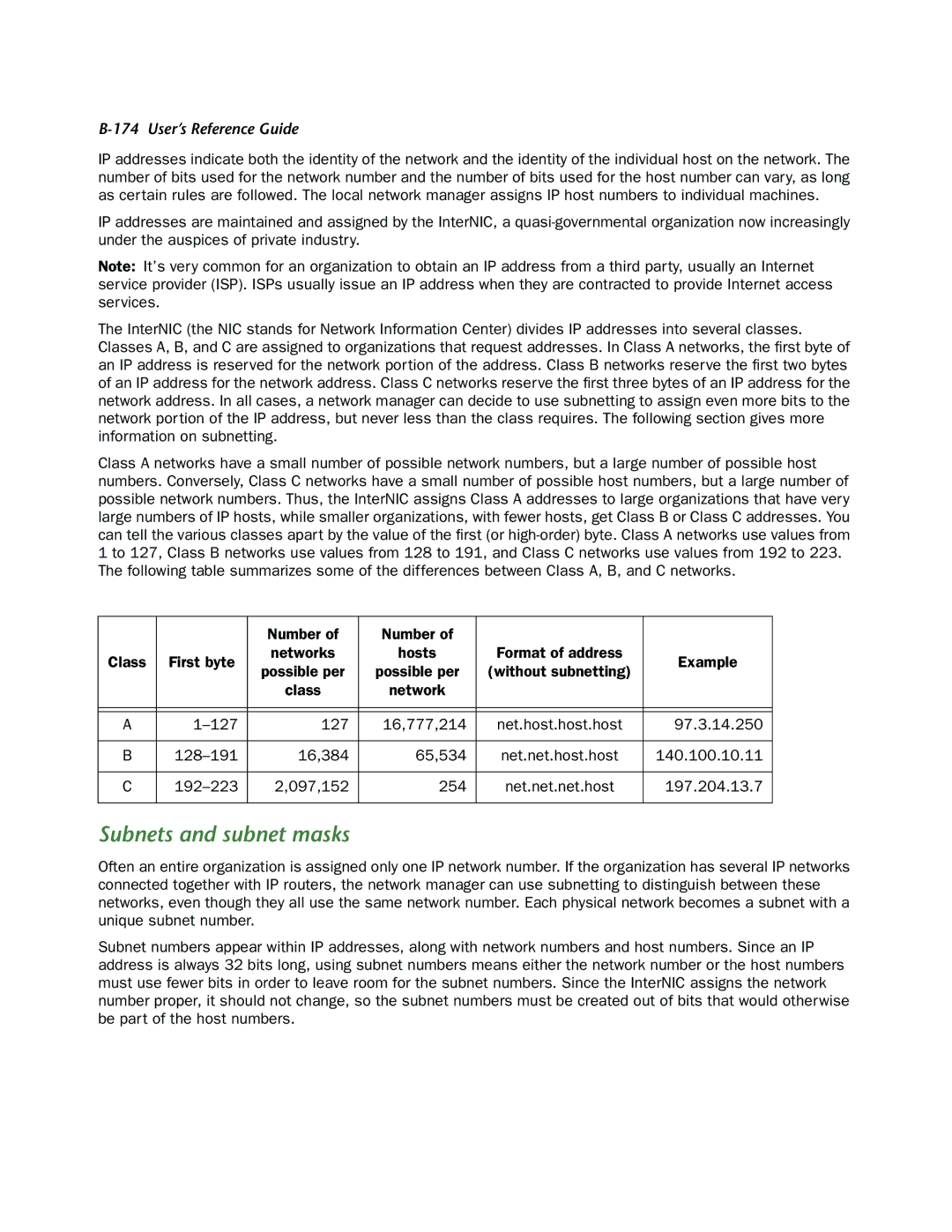B-174 User’s Reference Guide
IP addresses indicate both the identity of the network and the identity of the individual host on the network. The number of bits used for the network number and the number of bits used for the host number can vary, as long as certain rules are followed. The local network manager assigns IP host numbers to individual machines.
IP addresses are maintained and assigned by the InterNIC, a
Note: It’s very common for an organization to obtain an IP address from a third party, usually an Internet service provider (ISP). ISPs usually issue an IP address when they are contracted to provide Internet access services.
The InterNIC (the NIC stands for Network Information Center) divides IP addresses into several classes. Classes A, B, and C are assigned to organizations that request addresses. In Class A networks, the first byte of an IP address is reserved for the network portion of the address. Class B networks reserve the first two bytes of an IP address for the network address. Class C networks reserve the first three bytes of an IP address for the network address. In all cases, a network manager can decide to use subnetting to assign even more bits to the network portion of the IP address, but never less than the class requires. The following section gives more information on subnetting.
Class A networks have a small number of possible network numbers, but a large number of possible host numbers. Conversely, Class C networks have a small number of possible host numbers, but a large number of possible network numbers. Thus, the InterNIC assigns Class A addresses to large organizations that have very large numbers of IP hosts, while smaller organizations, with fewer hosts, get Class B or Class C addresses. You can tell the various classes apart by the value of the first (or
|
| Number of | Number of |
|
| |
Class | First byte | networks | hosts | Format of address | Example | |
possible per | possible per | (without subnetting) | ||||
|
|
| ||||
|
| class | network |
|
| |
|
|
|
|
|
| |
|
|
|
|
|
| |
A | 127 | 16,777,214 | net.host.host.host | 97.3.14.250 | ||
|
|
|
|
|
| |
B | 16,384 | 65,534 | net.net.host.host | 140.100.10.11 | ||
|
|
|
|
|
| |
C | 2,097,152 | 254 | net.net.net.host | 197.204.13.7 | ||
|
|
|
|
|
|
Subnets and subnet masks
Often an entire organization is assigned only one IP network number. If the organization has several IP networks connected together with IP routers, the network manager can use subnetting to distinguish between these networks, even though they all use the same network number. Each physical network becomes a subnet with a unique subnet number.
Subnet numbers appear within IP addresses, along with network numbers and host numbers. Since an IP address is always 32 bits long, using subnet numbers means either the network number or the host numbers must use fewer bits in order to leave room for the subnet numbers. Since the InterNIC assigns the network number proper, it should not change, so the subnet numbers must be created out of bits that would otherwise be part of the host numbers.
